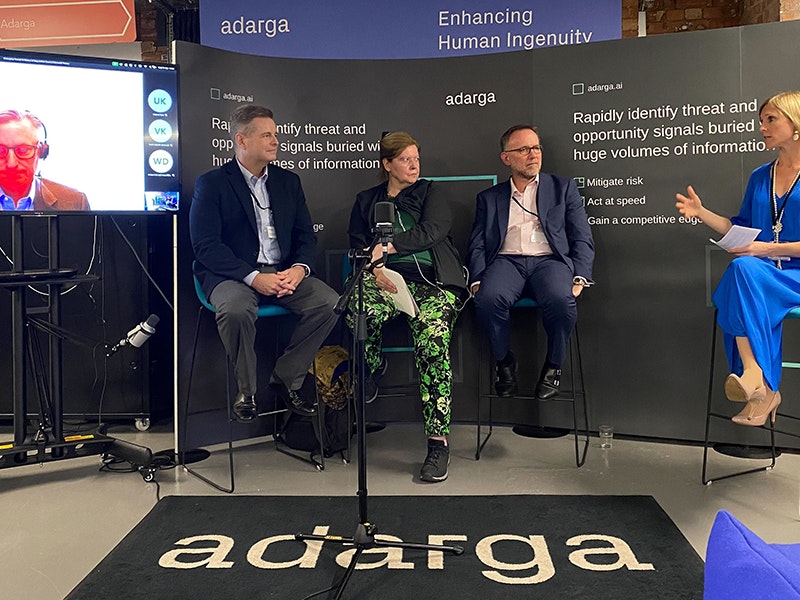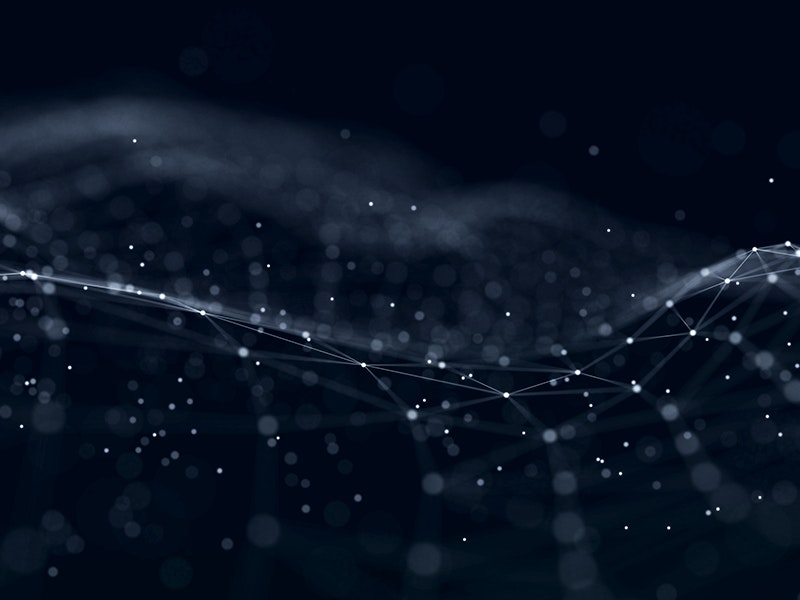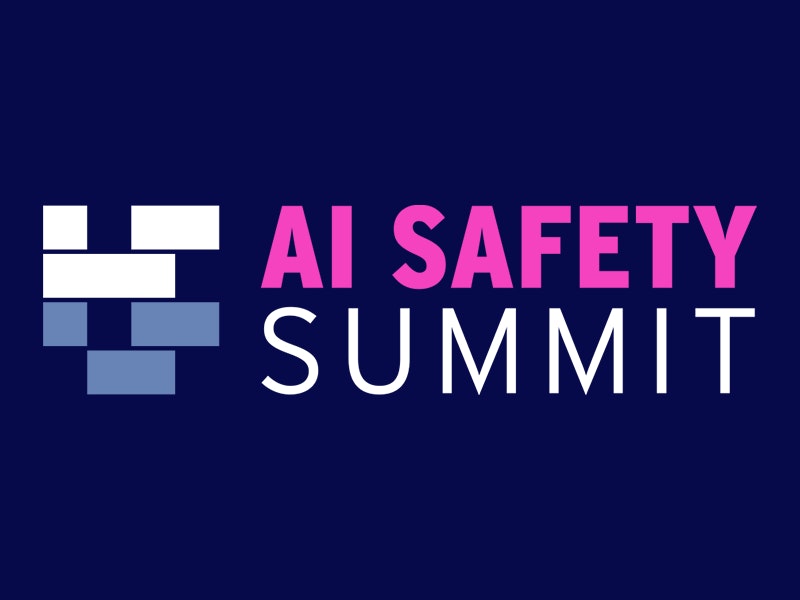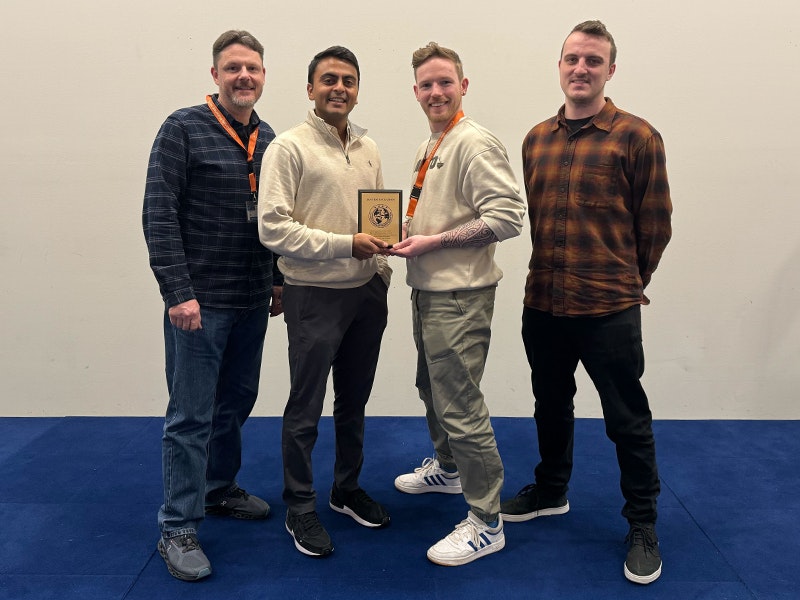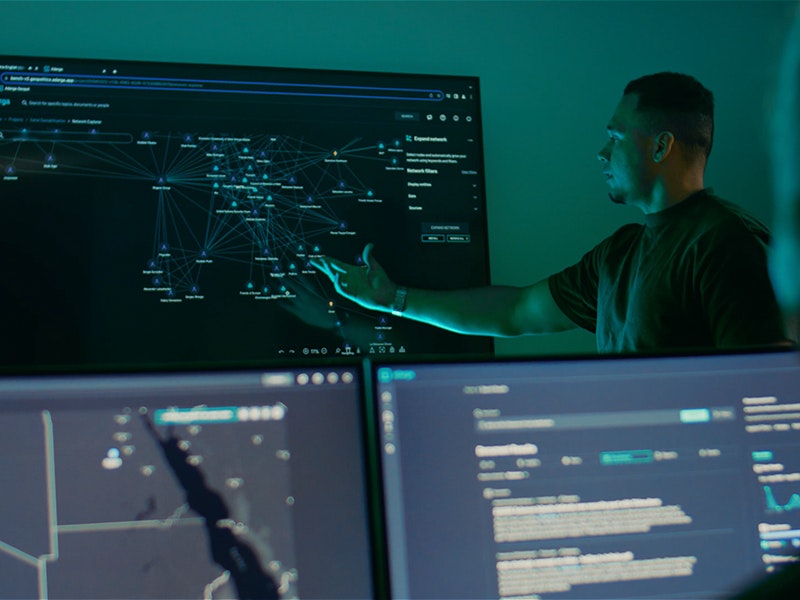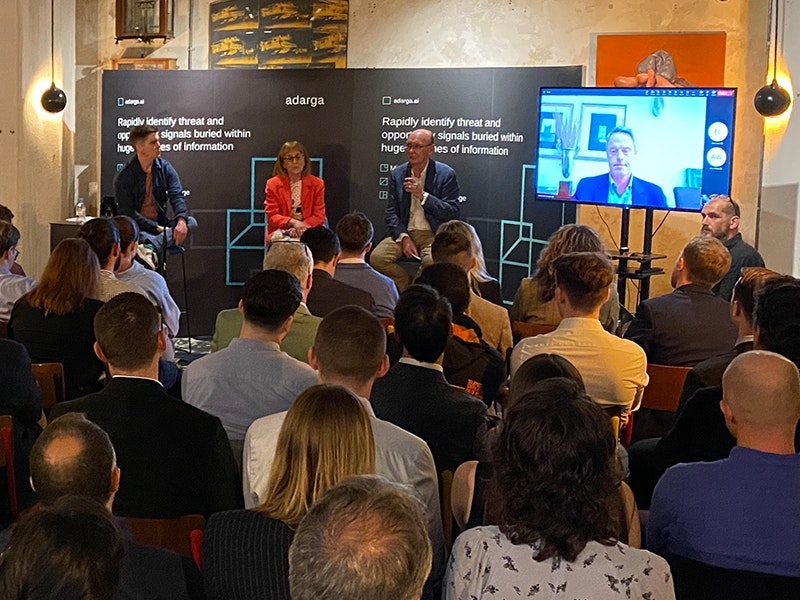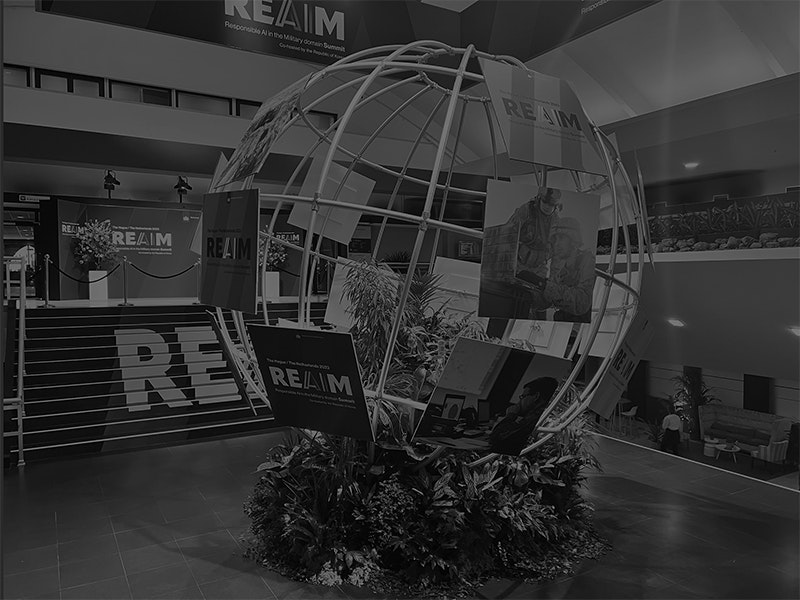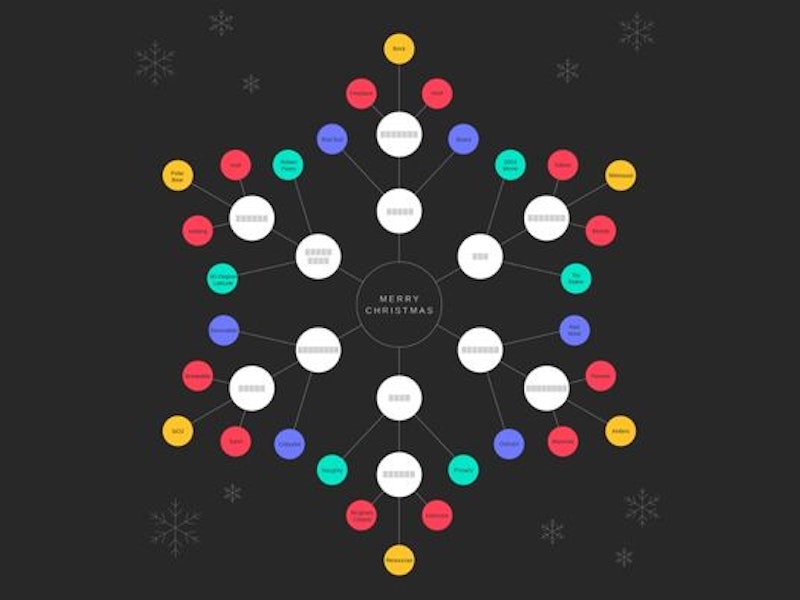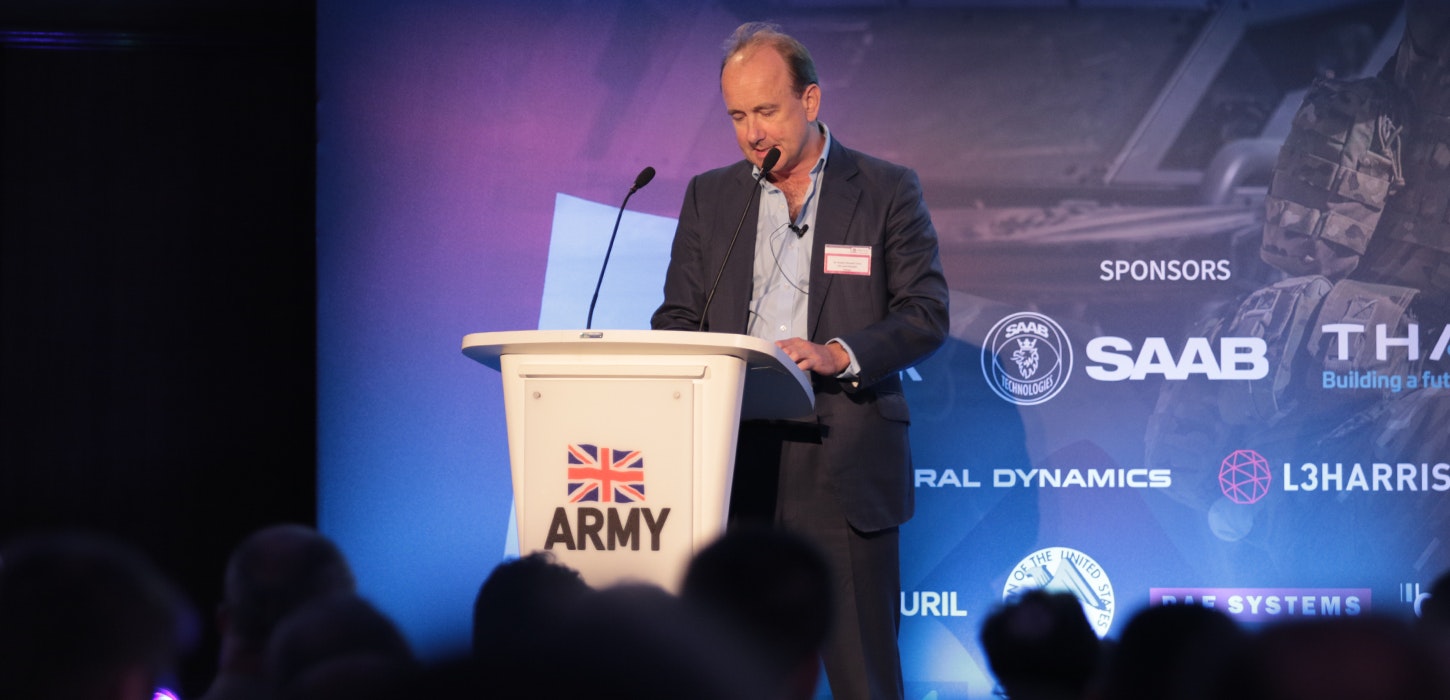
Transforming out of contact: how can the British Army secure mission-critical advantage in a software-driven world?
British Army Land Warfare Conference, June 2023
Executive Summary
Adarga is proud to have been working closely with the British Army to drive AI-readiness across the force. At the Land Warfare Conference 2023, Adarga CEO Rob Bassett Cross delivered a powerful address on accelerating the development and deployment of software as a primary back-office and battlefield weapon.
He outlined how agile, AI-driven information tools that are responsive to rapid changes in combat conditions facilitate faster, better, decision-making; he highlighted how market-driven innovation in the commercial sector can be harnessed to meet military needs; and he illustrated the cultural, infrastructure and procurement challenges that the forces must overcome if they are to realise a major – and mission-critical - modernising shift. Most significantly, he proposed a route-map that will facilitate this shift, building on the transformational work that is already underway.
He approached the subject based on his own deep military experience, and from his company’s experience in developing leading information intelligence capabilities. Capabilities that process vast volumes of in-house and publicly available data, in real-time, 24/7, and present them in comprehensible formats for sophisticated interrogation. This is supercharging the work of analysts, researchers and planners, empowering them to extract deeply buried insights for decision advantage.
Image credit: RUSI
Why AI?
I am confident that The Defence Command Paper will state in no uncertain terms, the imperative to adopt Artificial Intelligence (AI).
Harnessing AI must be one of Defence’s key strategic priorities if our forces are to realise the advantage provided by its “spearhead capabilities”. Capabilities such as C2 and Intelligence. It’s a strategic priority too if our forces are to realise the power of AI to deliver far greater organisational efficiency.
AI is the most important foundational technology of our generation. It has the potential to transform both back office and front-line functions and – critically – to revolutionise your ability to be truly innovative at the point of mission need.
What it does is it makes sense of the overwhelming volume and variety of inputs that are available to you. AI helps you bring together all that disparate data, information and the technologies that manage it, and ensure interoperability with allies and partners.
AI teams the human with the machine. It provides the underpinning capability that enables the integration of data, information, and knowledge. This is essential for commanders at all levels to maintain decision advantage.
In time, data and information processing will become the domain of AI - fully. Not only will routine tasks be handed over to machines: much of the typical decision-making activity that currently consumes people in their day-to-day work will also be taken over by AI. The increasing adoption of AI will in turn fuel even greater speed in its development and sophistication.
The pace of change we are witnessing is only going to get faster. There will also be an ever-closer, integrated relationship between your human planners, decision-makers and operators and their AI-driven technologies. (In my own sector AI-coding assistants have already increased the productivity of software developers by a substantial margin).
There is, of course still the urgent need for force-wide cultural change – as you have addressed all too clearly today. That need is particularly critical in terms of risk calculus, achieving rapid increases in digital skills, and developing greater agility in procurement processes. Changes in these areas are vital if we are to exploit AI effectively and to its utmost.
Re-engineering your Approach: The Software-native Future
If you are to truly integrate across human, data and machine, and if you are to truly harness the strategic advantage that this integration affords, you must evolve into a modern, software-native organisation. Because software, and its unifying data infrastructure, is where AI lives and operates.
Software’s key advantage is that it affords much greater flexibility and gives organisations the agility to field new capabilities much more rapidly. The world is becoming much less hardware-centric. And the commercial sector has been quick to embrace a software-enabled approach to learn, adapt and ultimately to stay relevant and competitive in the markets in which they operate. Emphatically, it’s the private sector that leads the way in the development and use of software.
DCGS today called for a closer, more intimate integrated relationship with industry. This is something we must get right – and get right quickly.
Proof of Soft(ware) Power in Ukraine
We’ve witnessed the effectiveness of this, irrefutably, in Ukraine. Software-driven technologies have delivered Ukrainian forces the marginal but vital advantage of speed.
Whether that’s an effective Call-For-Fire, organising volunteer logistics networks or mobilising the local population to canalise an advance by denying key routes through messaging apps - it’s all about getting the drop on your opponents in the path from information to decision to action.
This is really what we are witnessing in Ukraine – machine speed capabilities overlayed and being used to great effect to improve the employment of industrial age hardware.
This is underpinned by a vital relationship between three things:
- Having the technical and organisational foundations to transform into a software-driven organisation.
- Having the culture, training, and skills to learn, innovate and evolve, at all levels of command, at great pace.
- Adopting a highly effective ecosystem approach: partnering with the people and organisations who are dedicated to developing cutting-edge technologies.
It’s important to note that whilst the Ukrainian forces have been incredibly agile since February 2022, their miliary transformation started in 2014, driven by their defining experience the 2014-2022 Donbas War.
We must also not forget the cultural, organisational, and doctrinal adaptation process that began as far back as the 1990s.
The Automatic Tactical Management System called “Kropyva”, now the default artillery app, was developed in direct response to the effectiveness of Russian fires-recce in mid 2014 to early 2015. At that time, it accounted for 80% of Ukrainian losses.
Kropyva is a mapping intelligence application that runs on Android. It allows a person with a terminal, usually a tablet, to easily mark an enemy position. The software then transmits the indication to nearby artillery pieces and facilitates the coordination of their fire. The result is a synchronised fire against the same target from several separate positions.
This software has reduced the time required to initiate counter-battery fire by a factor of 10 to just 30 seconds.
This is why Kropyva has been called the “Uber for artillery”. There are plenty of other examples. Mass mobilisation has forced the section of society that really understands this technology (those who develop, use, and deploy this software in their everyday worlds) into the very heart of the force. These highly skilled experts are repurposing commercially available software-driven solutions for military use.
It’s also worth noting here that three quarters of the digital platforms in use in UKR today have been developed by civilian volunteers.
Winning the Internal Culture War.
Remembering that the foundations for this transformation were laid pre-conflict, how can the British Army replicate the imperative for change out of contact? First, we must overcome an internal conflict.
Whilst empowering our leaders to think, through clear intent, mission command and effects, how can we enable them to act?
How do we avoid a perpetual cycle of replacing stuff and instead think about how they can deliver new services and features that deliver mission value? Focusing on mission outcomes and not capability development is critical.
Legacy programmes, tightly coupled to out-of-date infrastructure, hardware and applications only still exist because they are what current organisational structures, processes and incentives are designed to manage. The ability to be free thinking can very well be constrained by infrastructure. Unless addressed, constraints will continue to take precedence over mission-driven outcomes.
The good news is that loosely coupled, composable, open, and scalable software services that are integrated by design will give you the freedom of manoeuvre you need.
In a software-defined world human leadership can deliver outcomes at the point of mission need. You may not have these tools. But you also can’t specify these tools ahead of time. These are the tools that you will create to meet mission requirements at the time they are needed.
But you can only create them if you have the software-defined platforms and infrastructure foundations in advance. This is already becoming a commodity capability in the private sector.
When the British Army created its general staff in 1903, one of the key purposes of a hierarchical structure was to provide accurate, timely information upon which decisions could be based. This was well suited to maximising the upward flow of information for decision making and downwards flow for the dissemination of orders. In this model the human command structure is the data and computational infrastructure. The intelligence wasn’t artificial. I invite you to look at what this model looks like today – 120 years later.
Social structures, particularly the communication paths between people in organisations, have an inevitable influence on final product or service design. As the oft-quoted “Conway’s Law” has it, “Organisations which design systems…are constrained to produce designs which are copies of the communication structures of these organisations”.
A fundamentally different approach is required in a software- and data-driven world in which the physical alignment in organisational structure doesn’t necessarily apply. One in which social and technical alignments can be influenced by the effectiveness of data architectures, and the ways in which they enable mission owners to achieve their goals more effectively.
As evidence, consider how software and modern data infrastructures are enabling even the largest global organisations to develop much flatter hierarchies, and leaner, faster, and more capable operations.
For the Army this offers perhaps the exciting prospect for a more information-age interpretation of that central tenet of British Military Doctrine - Mission Command: the philosophy of decentralised command based on trust and initiative.
Transformation Out of Contact – Why This Cannot Wait
The stakes are too high for any further delay.
Lessons from Ukraine show what is possible. But we must also recognise that there is a limit to how far a force can transform above the level of rapidly evolving TTPs whilst they remain in-contact and with digitalised (but still predominately manual) combat systems.
The British Army’s opportunity to learn from this and jump a generational bound ahead is clear.
This is the moment to catalyse a generational shift in thinking and approach.
The technical challenge will be steeper. Hardening against EW, the ability to truly automate systems, dealing with the limitations of legacy hardware and getting data services to work at secret and above: these are not simple problems.
But there are reasons to be very optimistic. The work of US 18 Corps, led by General Chris Donaghue who employed a civilian Chief Technical Officer through what the US call a “highly qualified expert” contract is one exemplar. Jared Summers was former chief digital officer and chief technology officer of ExxonMobil. The US 18 Corps’ work in operationalising new targeting systems in partnership with private sector technology companies has been outstanding.
The Royal Navy, through its STORMCLOUD project, and your own 1st Division Defence Readiness Experiments have also demonstrated it is possible to contract for unbounded requirements and unconstrained deliverables. We are proud to have supported both these projects, as well as key AI-readiness initiatives that the British Army have been driving more recently. This is integral to the provision of the foundational infrastructure that enables software and AI innovation.
Essential Steps to Enable our Word-Leading Soldiers to Keep Winning
History teaches us that those nations who are first to harness once-in-a-generation technologies are afforded a Strategic Advantage.
The British Army can own this future. How do we get ready for it today?
I would like us to reimagine Multi Domain Integration in terms of a more software native acronym – Multi-modality, DevSecOps and APIs everywhere.
This requires that we design and build the digital infrastructure to enable unrelenting innovation and agility. An Army AI Centre is key to this and will help get as many real AI workloads into production as possible.
But we must also get to work on the back-office. Efficiencies in Army HQ and other headquarters are perhaps the easiest and quickest wins to achieve. They will liberate valuable human resources back into the field.
We must build these modern software-defined systems in small steps - continuous integration and continuous delivery is key. We must stop defining long-term capabilities and writing detailed requirements. Leadership needs to be organised and incentivised to think like Product Owners.
We invite you to lean on strategic partners in the private sector to help build the ecosystems of hundreds of software companies. Ecosystems that will give access to the world-leading people and skills that will help develop the mission tools and services that will enable our word-leading soldiers to keep winning.
New ways of doing things are always hard. Sometimes what those new ways require are partnerships. Partnerships with people who have done it before, and who keep innovating daily. These are the people who will help to demonstrate what we need to do – and empower us to do it.

